- How to Find the Best Charcoal Smoker – Top 6 Picks - October 26, 2021
- Ground Mustard Seasoning Guide for Meat - October 21, 2021
- 14 Best Online Fish and Seafood Delivery Services To Try - October 21, 2021
Throughout the years, shopping for meat has changed. First, we would head to the local butcher or meat market and get our meat over the counter while having a conversation with another person. Now, we head to the grocery store and pick up a package of meat wrapped in plastic.
Sure, there’s a convenience to walking straight to the meat section and getting what you want, but what if you have a question? There’s no expert available to guide you on buying exactly what you need. Of course, pining for days gone won’t make the magically return.
If there’s no expert on hand to advise you, I suppose the next best thing is to educate yourself, so you know exactly what to get. Of course, it’s the same whether you’re choosing beef, pork, chicken, or something else. But for the purposes of this post, I’m going to focus on pork.
There are a wide variety of pork cuts available, so it’s important to know precisely what you need before you head to the grocery store. We’re going to discuss all these different cuts, but first, let’s take a look at what to consider when purchasing pork.
Buying Pork

The versatility that pork offers make it an excellent choice for any meal. Whether you’re making dinner for your family or entertaining guests, you can’t go wrong with pork. Before you spend your hard-earned money, here are a few things to consider:
Amount of Leanness
Today’s production processes have reduced the amount of fat content you typically get with a cut of pork. That means it’s much leaner than it used to be. If you want a really lean cut of meat, look for selections labeled “loin.”
Time
How much time you have should be another consideration before buying pork. If you don’t have a lot of time, you might want to purchase a smaller cut. Something like pork chops. They cook quickly and can be prepared in a variety of ways. Or, if you have multiple dishes, you could buy a nice roast. Then, you can throw it in the oven or in a crockpot and let it simmer while you work on something else.
Size of Your Group
How many people are you cooking for? The average pork service size should be around three ounces. So if you start with four ounces of boneless meat for each person, you should have enough pork for everyone.
What part of the pig do you want?
There are parts of the pig that are known as “primal” cuts. These are the cuts that come from specific parts of the animal. Knowing where the cut comes from gives you a better idea of how tender your pork is going to be. It can also help you determine what cooking method to use as you prepare your meal.
Price
Last but not least is the cost. While some cuts of pork are much more expensive than others, you should be able to find a suitable option if you want to save money. A lot of boneless cuts are cheaper and easier to prepare because the bone has been removed.
Pork Cuts and Varieties
Let’s start by looking at the pig as a whole. Think of a pig that has been cut in half with the internal organs and head removed. Yes, it’s a little gross, but it’s usually the way a pig is delivered to butchers or independent meat markets once it’s been slaughtered. From this point, a good butcher will cut the carcass into smaller portions.
The pig is cut into four sections, which are then cut down into the smaller cuts you find in your grocery store. However, keep in mind that each section will have various cuts that you may not be familiar with since each butcher will have its own specific methods.
To keep things as straightforward as possible, I’ve listed the most cuts as you’re likely to see them in your local grocery store. So with that in mind, let’s get started.
The Shoulder
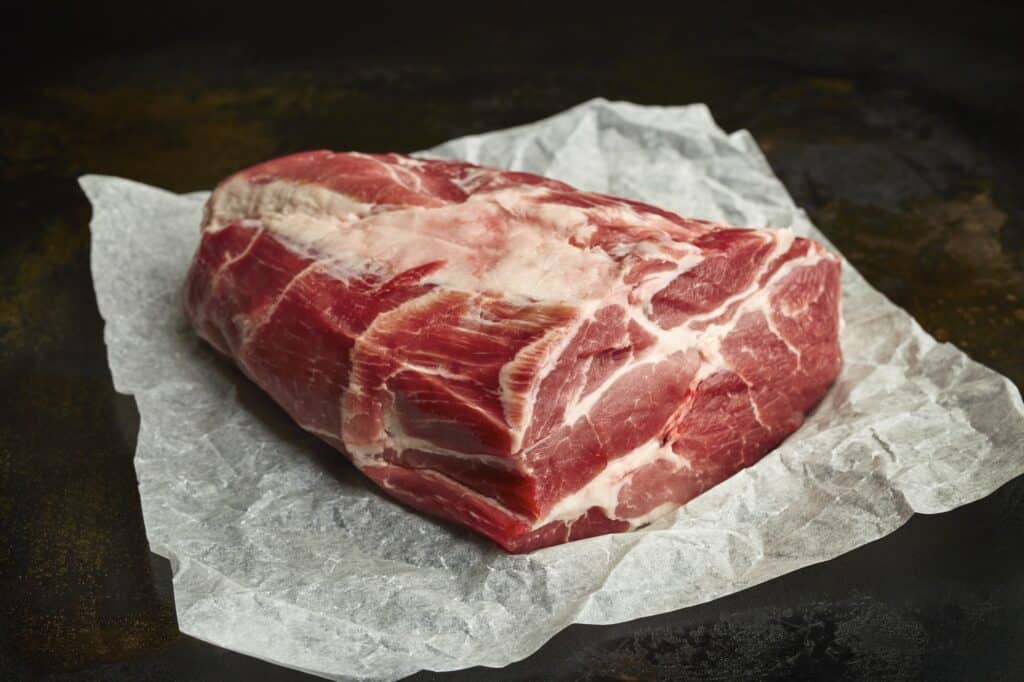
As you already know, the shoulder is the part of the body that supports the weight of the animal’s head. That means it’s constantly moving as the head moves up and down or side to side, which is often used when the animal eats. As a result, the cuts from the shoulder are typically a little tougher because they consist of tougher muscles and ligaments.
That means you’ll need to cook cuts from the shoulder longer and slower to allow those fibers and muscles to break down. However, you’ll also get plenty of flavor from these cuts. The extra attention you have to give to it makes it worth it when you’re rewarded with sweet, delicious pork.
Since this part of the pig is typically tougher and has additional fat, pork shoulder is generally used to make sausage and ground pork.
Pork Butt
Yes, it’s called pork butt, and yes, it comes from the shoulder of the pig. Pork butt is one of the best cuts of pork you can get. It’s the prime part that sits between the neck and the shoulder, which includes the blade bone.
Meat smokers really like using the boneless pork butt because its natural fat allows them to cook the meat for more extended periods of time without it drying out. In addition, pork butt is ideal for smoking pulled pork since you can easily pull it apart into strands after you cook it for a long time over low heat.
Pork butt is usually around 30% fat, which makes them the perfect cut for griding up and making ground pork, pork burgers, or sausage. Additionally, some people prefer their pork butt with the bone in. These cuts make great pork chops or spare rib chops.
Pork Neck
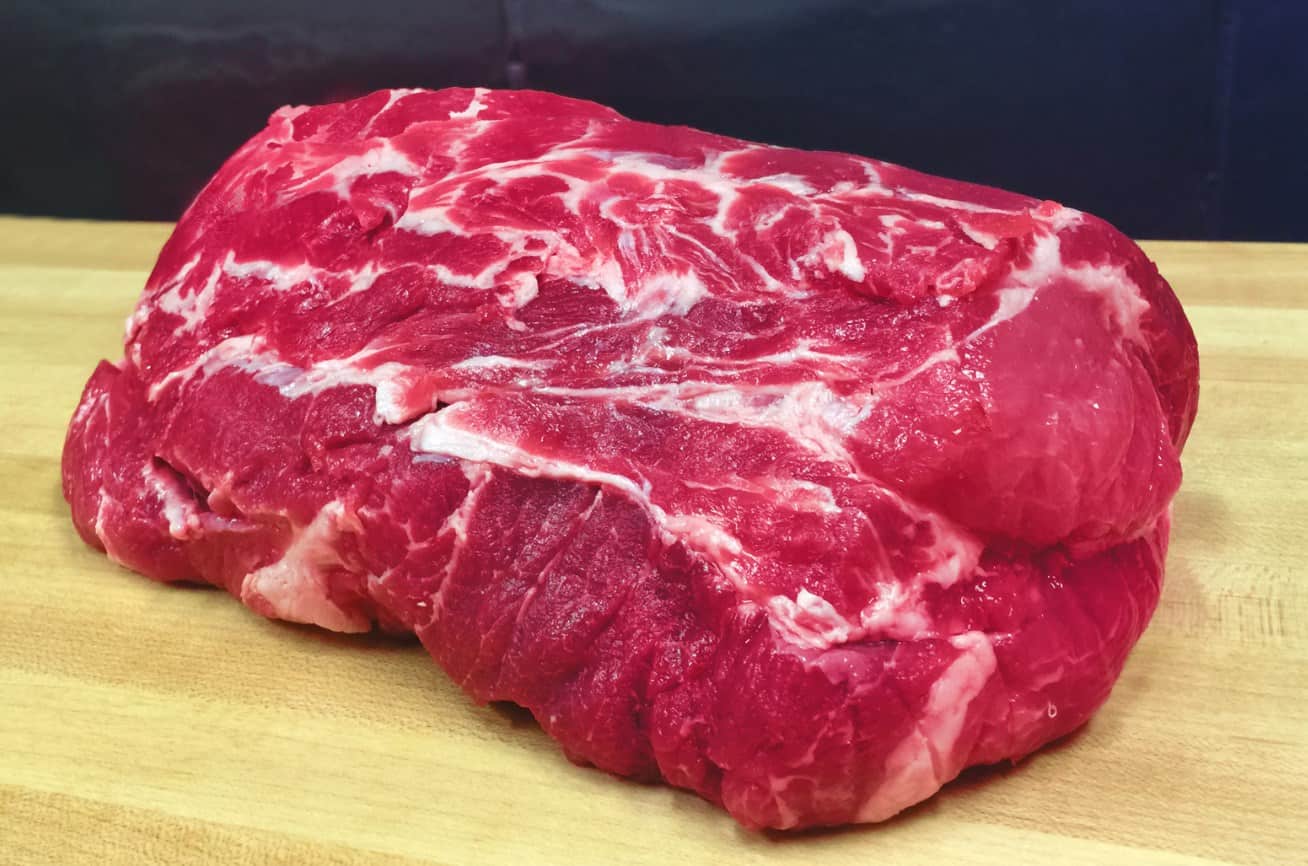
The pork neck cut is typically very tough due to the fact that it has to support the full weight of the animal’s head. That’s why this cut is usually boned out and used for pork sausages or ground pork. Pork neck isn’t usually found at your local grocer, but if you really want one, you can probably find it at your local Asian shop.
Pork Shoulder Ribs
When the butcher debones the pork shoulder and creates the pork butt, they can also remove a mini rack of ribs from the pork shoulder, called pork shoulder ribs. The size of the small rack will depend on how the butcher chooses to cut up the pig.
If a generous amount of meat remains on the ribs, you can slow cook them on a smoker and eat them like they’re baby back ribs or spare ribs. However, if there’s not enough meat, you can usually take the neck bones and make a nice broth with them.
Pork Picnic Roast
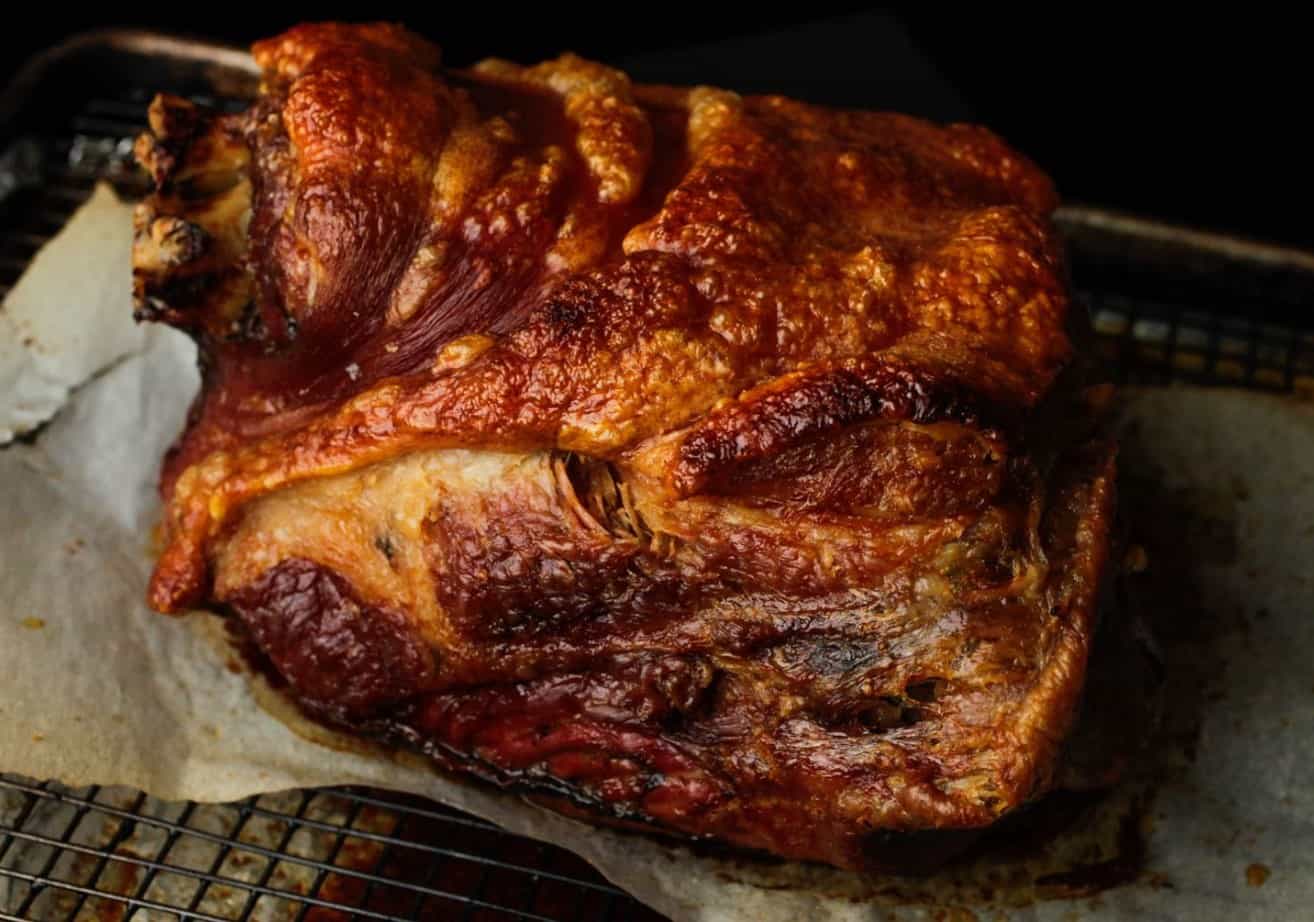
The lower part of the shoulder is known as the pork picnic roast. It typically includes the hock or arm of the pig. Since this cut is so thin and irregular, butchers usually bone or partly bone the pork picnic cut. The skin, also called the crackling, is typically left on the pork picnic roast.
Some people refer to this cut as the picnic ham, which can cause confusion since ham cuts come from the rear leg of the pig or the hindquarter. It’s rare to see this cut in the meat aisle, but if you do, remember that it’s from the shoulder and will take longer to cook than other cuts.
The Loin
The pork loin is the back of a pig and starts at the shoulder and makes its way down the leg. Cuts from the loin include the tenderloin and the pork filet. With the loin, you’ll get delicious, juicy cuts of pork that are great whether you leave the bone in or have it removed completely.
The cuts you get from the pork loin are similar to what you get with beef steaks. Here’s a quick rundown of how they compare with one another:
- T-Bone – Bone-In center-cut pork chop
- Porterhouse – Bon-In center-cut tenderloin
- Ribeye – Boneless rib-cut pork steak
- New York Strip – Boneless center-cut pork steak
- Top Sirloin – Boneless chump
- Filet Mignon – Whole pork tenderloin
You can find pork loin with either skin on or the skin removed, depending on the butcher’s preference. There are also places that will sell the loin as a roasting joint. Additionally, french trimming the rib portion of a pork loin will produce a pork rack or a pork crown.
With these things in mind, here are a few of the different cuts you’ll get from the pork loin:
Center-Cut Pork Chops
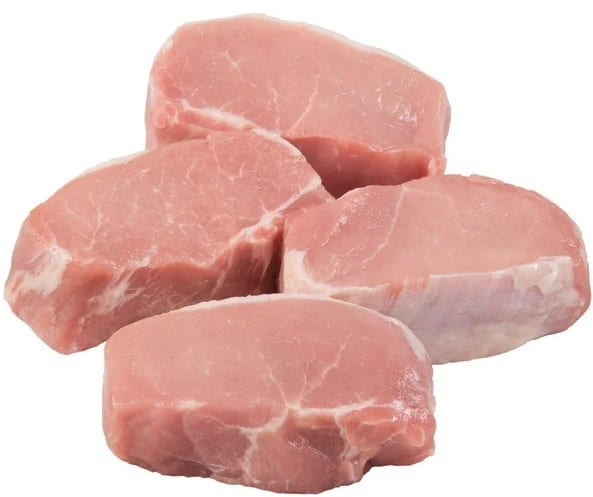
You get center-cut pork chops from the loin where the tenderloin is located. With this cut, you’ll have the pork equivalent of a t-bone steak or a porterhouse.
Pork Loin Chops
A chop is a name given to a cut of pork sliced from the pork loin. Typically these cuts leave the bone in. However, you can also get these cuts of pork with the skin left on or removed entirely.
Rack of Pork/ French Trimmed Rib Chops
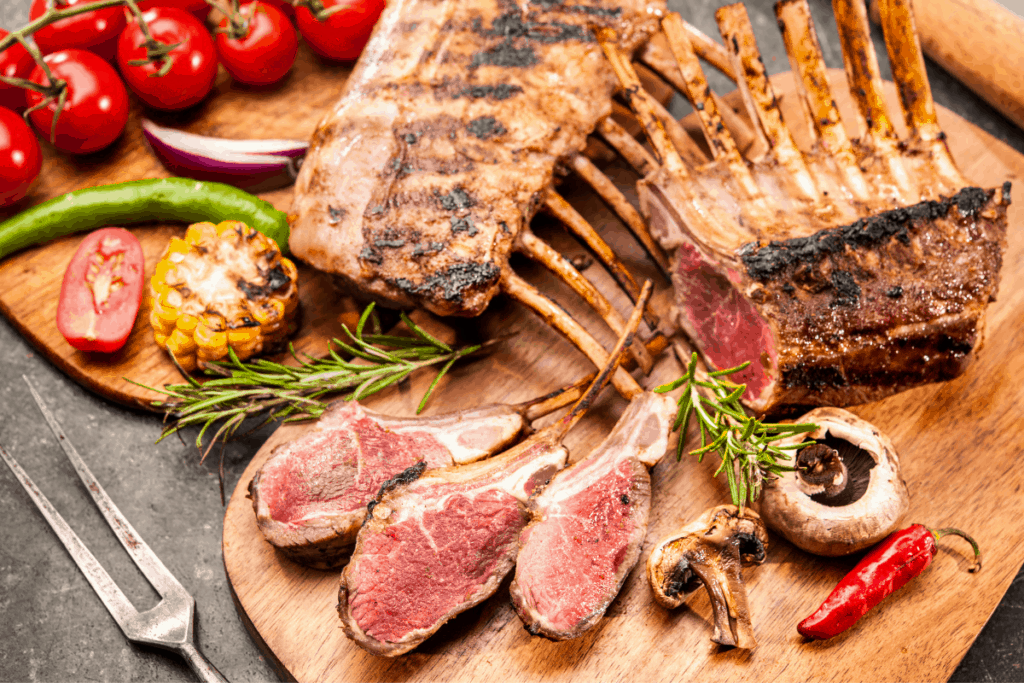
When the skin and backbone are removed from a cut of pork ribs, that’s called french trimming. This also includes trimming the fat of the meat in a way that only the eye of the meat remains on the rib bone.
Butchers will sell their french trimmed pork or rib chops as a roasting joint – often called a rack of pork – or individual chops. French trimmed pork chops are usually purchased for special occasions like dinner parties. This is because they are visually appealing and draw attention to the table.
Rib Cut Pork Chops
Rib cut pork chops are the cut where you’ll find baby back ribs. These cuts are typically thicker cut than what you’d find on a whole rib and are often cut lengthwise with a bandsaw for a thinner cut of pork. Rib chops usually don’t contain any tenderloin.
If you’re looking for a different cut of pork, you can try pork chops that have been ‘chined.’ This is when the backbone has been removed from the cut, so all you have left is the rib bone and the eye of the pork.
Country-Style Pork Chops
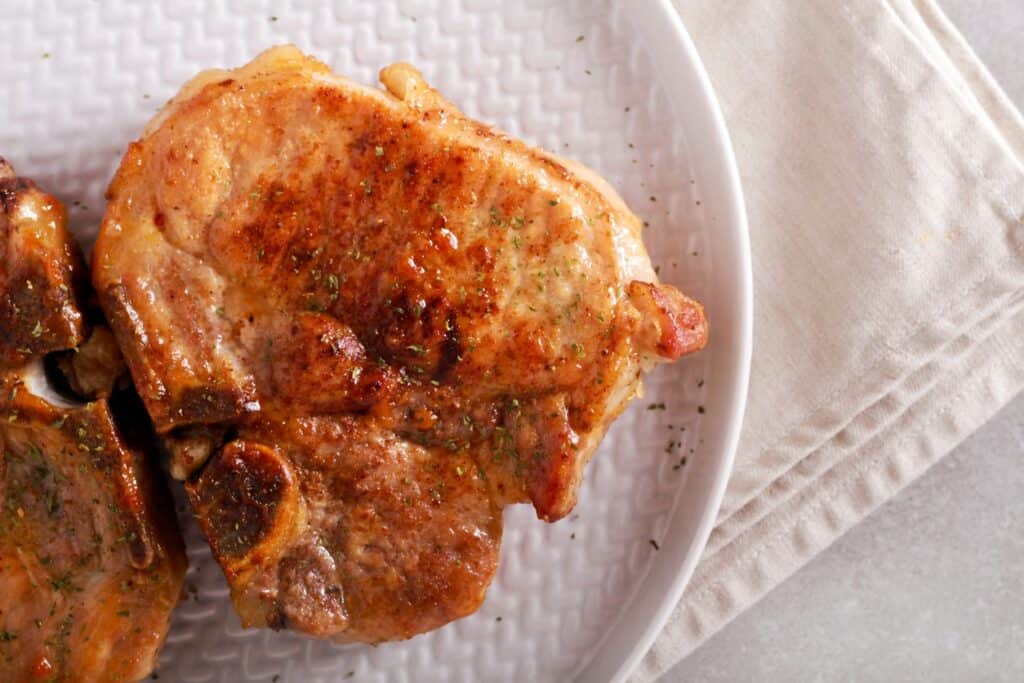
If you want a delicious cut of pork, give the country-style pork chops a try. These cuts are cut from the shoulder part of the loin and usually have part of the blade going through it. You’ll usually find these with the skin removed or cut through the middle to make smaller pork chops.
Pork Ribs
Pork ribs are one of the most popular cuts of pork you’ll find. These ribs are tasty and tender whether you’re headed to a backyard cookout or to a barbecue restaurant. When smoked with a block of nice hickory wood, it’s tough to beat pork ribs.
However, many people don’t know that there are many different ribs available on the market. This can be confusing for those who don’t know what to ask for when they head to the butcher shop for some ribs.
Let’s take a quick look at some of the more popular ribs that you’re likely to find at your local grocery store or butcher shop.
Baby back ribs
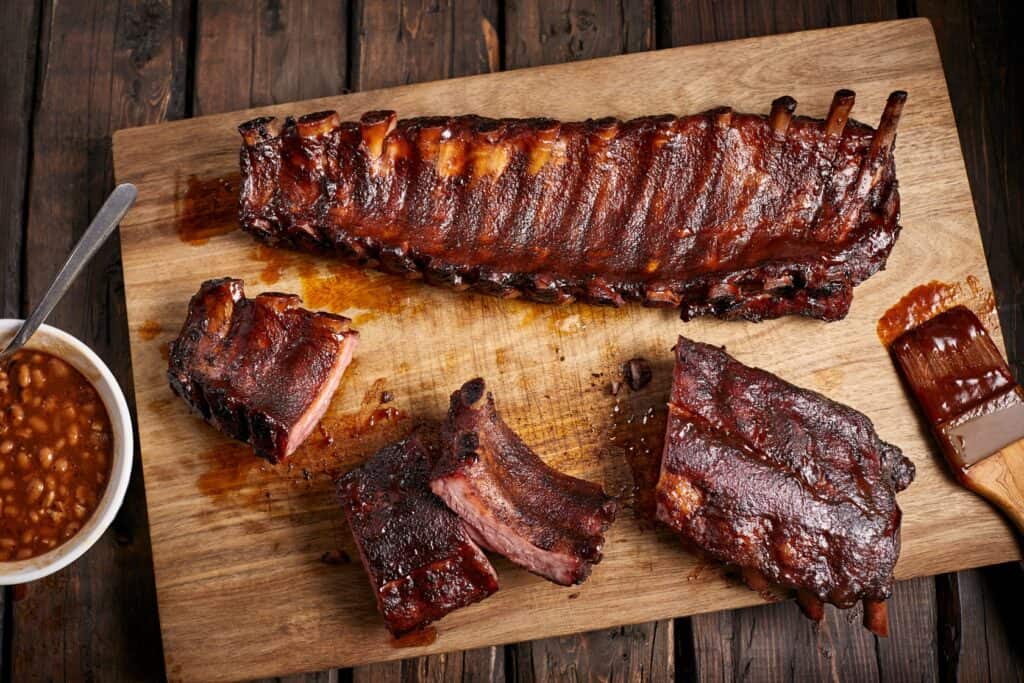
Baby back ribs are typically purchased as a full rack when bought at a meat market or grocery store. Most racks contain 10-12 ribs which will weigh roughly two pounds. The ribs are usually 6” long on one end and taper down to 3” on the other. Baby back ribs come from the loin of the pig, where the backbone and the loin come together.
These ribs are usually more tender and juicy than spare ribs, which is why you typically pay more for baby back ribs. An entire rack of baby back ribs should feed a few people, so if you plan on feeding a party, you’ll need quite a few racks.
Spare ribs
Spare ribs are cut from the belly/side of the pig. Specifically, it comes from the area where the bones are removed, and the meat is used for bacon. This type of rib is flatter and longer than its baby back counterpart. Plus, they still have the cartilage attached to the end.
These ribs are typically bigger than baby back ribs, weighing roughly 3 to 5 pounds. You can feed three or four people with a rack of spare ribs. Spare ribs have more meat on the bone, which carries more fat than baby back ribs. However, the meat on these ribs tends to be a little tougher, so you might have to cook your spare ribs a little longer.
St. Louis spare ribs
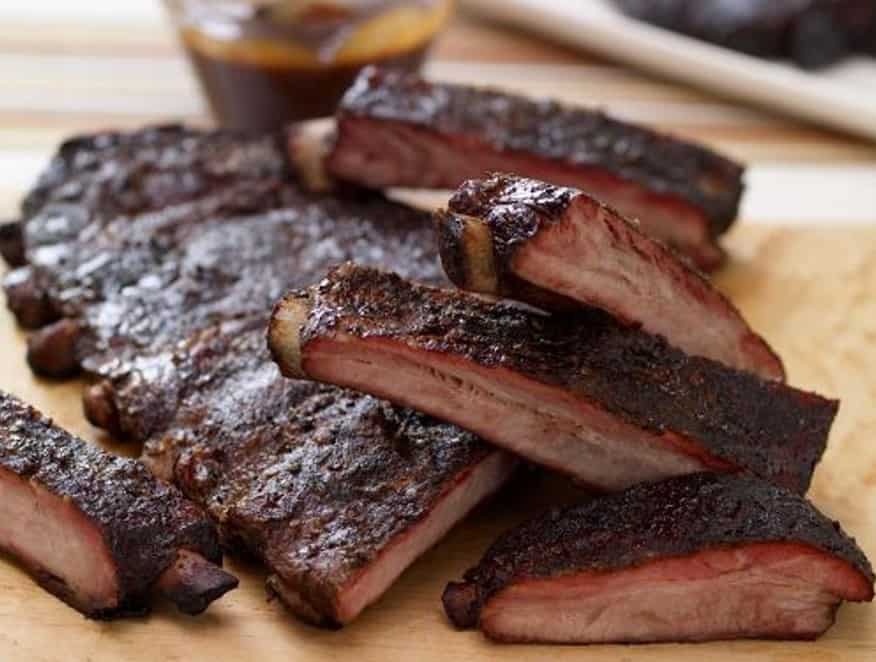
St. Louis spare ribs are similar to spare ribs with a bit of difference. The cartilage ends are removed on St. Louis spare ribs to make them rectangular and uniform. But don’t worry, you don’t have to do anything different. You prepare and cook St. Louis spare ribs the same way you do their untrimmed counterpart.
Pork Chops and Pork Steaks
When the bones are removed from pork chops, they are often referred to as boneless pork chops or pork steaks. Even though there are two names, they’re still the same cut of meat, but with the bone taken out.
Pork steaks are typically sold with the excess fat and skin removed. However, boneless pork chops are also available with the fat and skin intact but the bone removed. When the bone is taken out of the pork loin, it’s often portioned out into steaks or boneless roasting joints.
Roasts and Center Cut Pork Steaks
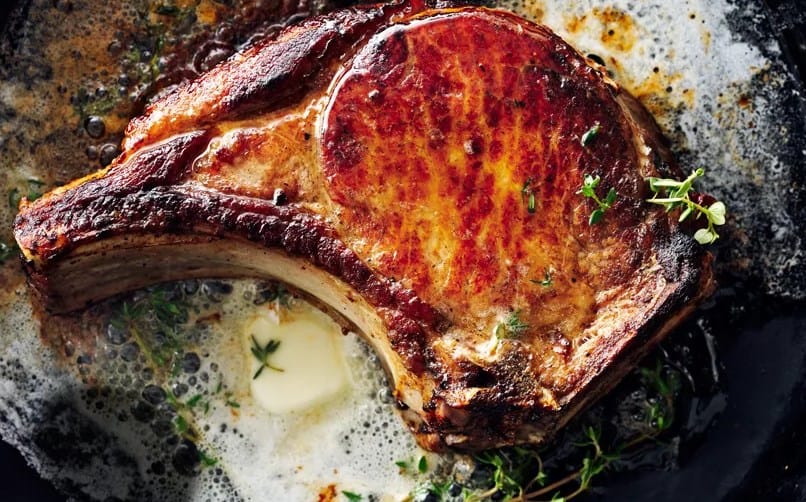
This cut of pork is the beef equivalent of the New York Strip. Center cut pork steaks are the eye of the meat, which has removed the excess fat and skin. These are usually available in large roasting options or pre-cut steaks at your local butcher or grocer. You may also find full loins since they a cheaper way of purchasing this cut, so you can split up yourself at home.
Boneless Pork Ribeye
The boneless pork ribeye steak comes from the rib end of the loin cut. If you want a cut of pork that offers more marbling and great flavor, this is the cut for you. Boneless pork ribeyes are one of the best cuts of meat you’ll get from a pig.
Pork Tenderloin
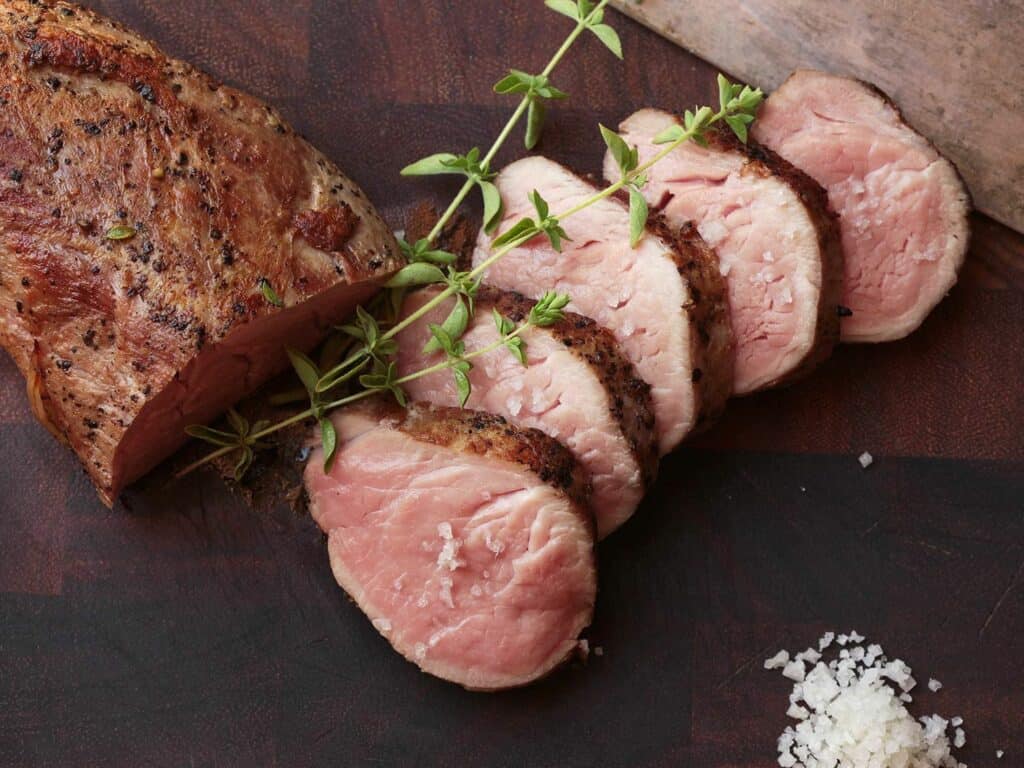
The pork tenderloin cut is a very tender and lean part of the pig that runs directly beneath the loin. This cut is considered by many as the filet mignon of pork. Since it’s a smaller cut, people often cook the pork tenderloin whole and then slice it when it’s ready to be served.
Additionally, since it’s so tender and lean, this cut is commonly sliced into strips to create delicious stir fry or even rolled or stuffed. Keep in mind that there’s a thin layer of skin on the pork tenderloin you’ll need to remove before you cook it.
Pork Medallions
Pork medallions are the cut of pork where the fat is trimmed away from the eye of the loin, leaving a tasty, lean piece of meat. Medallions are often the meat of choice for people who go on low-fat diets or want to make breaded cutlets by pounding them flat.
Pork chump
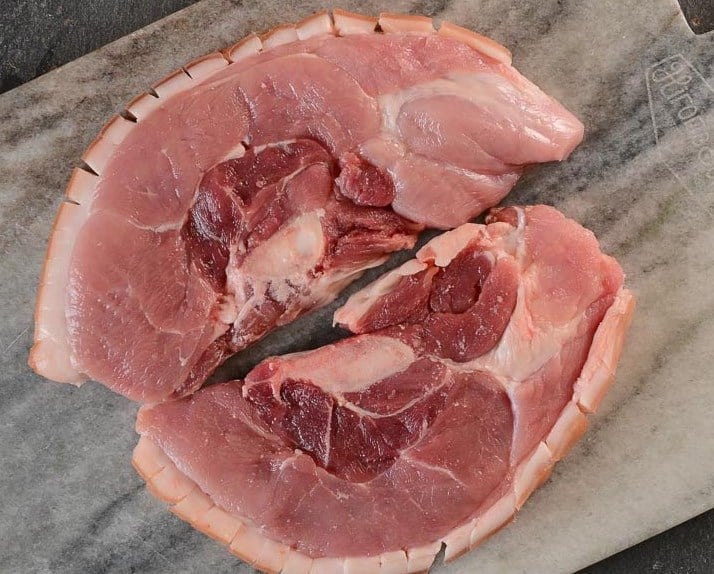
This cut of the pig is the rump end or top sirloin of the pork loin. This is where the loin attaches to the ham/leg of the pig. If you leave the chump attached to the loin, you can either have the bone left in or rolled and cut into steaks or boneless pork loin roast.
Back Bacon
The boneless part of the pork loin is also used for bacon. Butchers use a dry cure process that packages the fresh pork loin cut with flavorings and salt. Bacon that’s commercially produced is often cured in a wet brine concoction. Since they offer leaner and larger slices, unsmoked and smoked bacon are among the more popular cuts of the pig.
The Belly
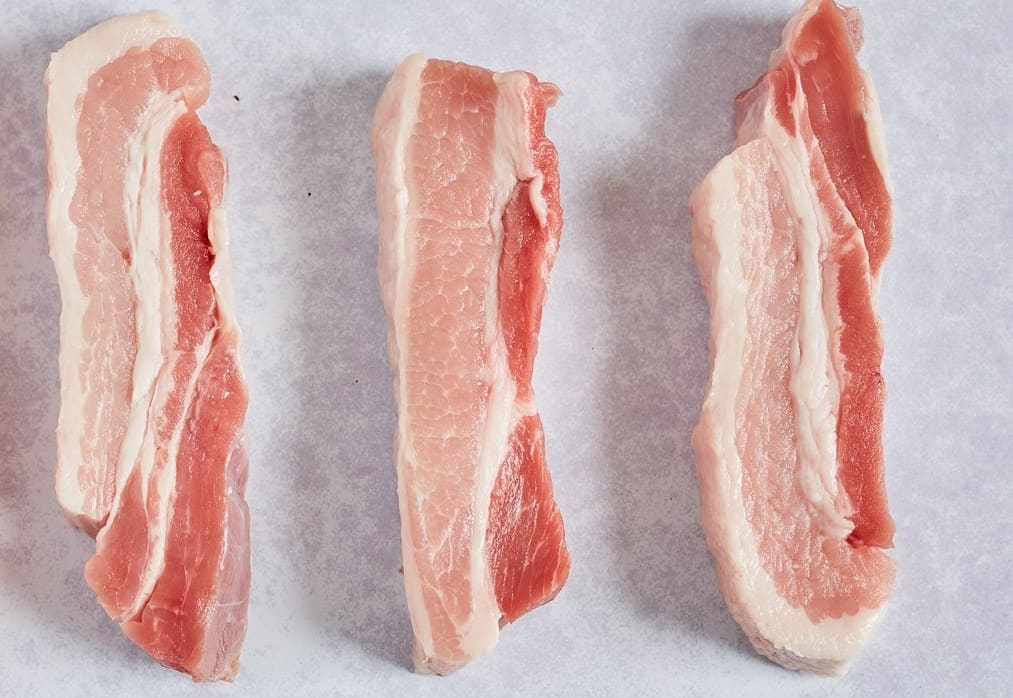
The pig belly is most often used to smoke and make sweet, sweet, delicious, tasty bacon.
Pork Slices
Pork slices are cuts of the popular pork belly because they are sold fresh with the skin on. Most butchers tend to score the meat, which is a process that requires cross-slicing through the skin to make it nice and crisp. This method is used to create ‘crackling.’
The pork belly is also sold as either roasting joints or slices, and you can choose to have these cuts with either the bone-in or the bone removed. These slices are thicker cut than bacon slices and are usually baked, broiled, or fried. If you keep an eye out, you can sometimes find a butcher that will stuff and roll the pork slices with sausage meat, creating a tasty treat.
The Leg
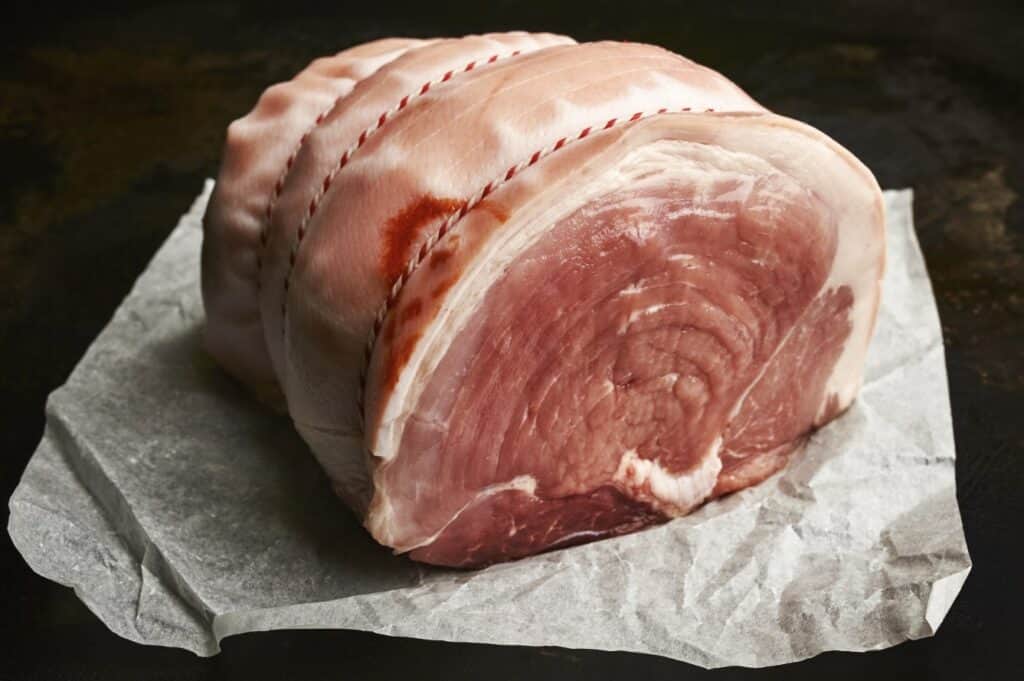
Ham or pork leg comes from the back leg of the pig. The leg can be cut long, which requires leaving the chump attached to the leg, or cut short, which leaves the top sirloin connected to the loin by the chump. This cut is also where the ham and roasting joints come from.
However, the leg can also be cut down into leaner sections and divvied up into pork steaks. The leg consists of many lean muscles which are nice and tender, making them ideal for kabobs, diced pork, or roasts. It’s also the part of the pig most often used to create hams, which is done by smoking and then curing the leg.
FAQs
Question: What are the primal cuts of the pig?
Answer: There are either four or six primal cuts of pig depend on what type of butcher you’re consulting. These are the large parts of the pig that are first cut and usually include the shoulder, loin, belly, and leg. However, some butchers also include the head and feet/tail as part of their primal cuts.
Question: Which cut of pork is the most tender?
Answer: The tenderloin is the single most part of the pig. This is the muscle that runs down both sides of the backbone. It is mild, lean, and very tender. Tenderloins are often seared and then finished on the cool part of the grill or in the oven.
Question: How do you prevent a pork roast from getting too dry?
Answer: Put your roast fat side up in your crockpot. With the fat on top, you ensure that the fat melts while it cooks, creating a baste for your roast. This is how you keep your pork roast from drying out and becoming too tough.
Question: Does pork get more tender if you cook it longer?
Answer: Unless your slow cooking your pork, the answer to this question is a no. Cooking pork longer will dry it out and making it tough and chewy. It will not make the pork more tender. Even when cooking with a crockpot, you run the risk of making the fiber in the meat contract, which makes for a tough, dry, and chewy meal.
Conclusion
There you are! There’s a lot of information here covering what you need to know about the most popular cuts of pork. If you read the entire article, you should have a good idea of how to tell the difference between your tenderloin and your pork belly. As you can see, there is no shortage of pork cuts available, so head out to your local butcher and start experimenting.
Read more:
- Pork Collar Cut Guide [2021]: Is It A Good Choice Of Cut?
- Knackwurst Guide and History [2021]: How To Enjoy It Best
- Cotto Salami Guide [2021]: Is This Cold Cut For You?
- Capocollo Guide [2021]: Is This Italian Meat Worth It?
- Erbswurst Guide and History [2021]: Is It A Good Meat Option?
- Pork Belly vs Bacon: The 5 Differences You Should Know
- Soppressata Guide [2021]: Best Cooking Methods To Try
- ButcherBox Review [2021]: Our Honest Verdict
- Tomahawk Steak Cut Guide [2021]: Is It The Best Cut For You?
- Weisswurst Guide and History [2021]: Is It Really Good?
